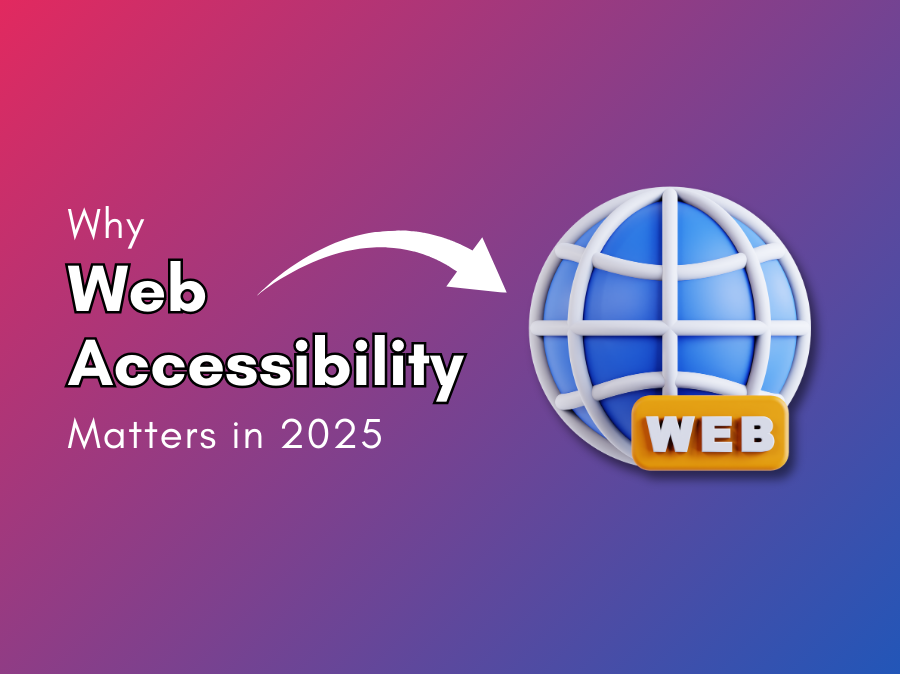The State of Web Accessibility in 2025
Over the past decade, the conversation around web accessibility has shifted from being a “nice-to-have” to a non-negotiable part of digital experiences. By 2025, accessibility has matured into a critical factor in web design, with organizations recognizing its impact on inclusivity, SEO, legal compliance, and brand trust.
The internet is no longer just a space for information—it’s an integral part of daily life. As such, ensuring that everyone, regardless of ability, can access and interact with online content is both a moral responsibility and a business imperative.
What Is Web Accessibility?
Web accessibility means designing and developing websites, apps, and digital tools so that people with disabilities can use them effectively. It is guided by principles from the Web Content Accessibility Guidelines (WCAG) and focuses on making content:
- Perceivable – Information must be presented in ways users can perceive.
- Operable – User interface components must be usable through multiple input methods.
- Understandable – Content and operation must be clear and predictable.
- Robust – Content should work reliably with current and future assistive technologies.
While accessibility benefits people with permanent disabilities, it also supports users with temporary limitations (like an injury) or situational constraints (like poor lighting or slow internet).
Legal and Compliance Requirements
By 2025, more countries have implemented or strengthened accessibility laws:
- ADA (Americans with Disabilities Act) in the US applies to digital spaces.
- EN 301 549 governs ICT accessibility in the European Union.
- Accessible Canada Act mandates web compliance for federal organizations.
- Many regions in Asia, South America, and Africa have adopted WCAG-based standards.
Failing to comply can result in lawsuits, fines, or reputational harm—especially as legal enforcement becomes stricter.
Key Accessibility Standards and Guidelines
The most widely recognized standard is WCAG 2.2, with WCAG 3.0 expected to introduce more flexible, user-centric guidelines.
The POUR principles remain the foundation:
- Perceivable – Content must be available to all senses.
- Operable – Navigation and interaction must be accessible to everyone.
- Understandable – Content must be clear and logical.
- Robust – The site must work with a wide range of assistive tools.
Common Accessibility Barriers
Even in 2025, many websites fail due to issues like:
- Poor color contrast that makes text unreadable.
- Missing or vague alt text for images.
- Inaccessible forms without proper labels.
- Navigation that’s impossible for keyboard-only users.
Benefits of Accessible Web Design
- Expands Audience Reach – Accessibility removes barriers, welcoming millions of users who may otherwise be excluded.
- Boosts SEO – Search engines reward semantic, well-structured sites.
- Enhances Performance – Accessibility often improves speed and usability for all.
- Strengthens Brand Image – A commitment to inclusivity fosters trust and loyalty.
Best Practices for Accessible Websites
- Use semantic HTML for meaningful structure.
- Apply ARIA roles where needed to enhance context for assistive tech.
- Maintain a logical heading hierarchy.
- Provide captions and transcripts for video/audio.
- Ensure keyboard navigation works without mouse interaction.
Tools and Testing for Accessibility
- WAVE – Browser-based accessibility evaluation tool.
- axe – Developer-friendly automated testing.
- Lighthouse – Built into Chrome for accessibility audits.
- Manual Testing – Using screen readers like NVDA, JAWS, or VoiceOver to experience the site as users do. Xtendify – A marketplace of professionally designed, accessibility-ready themes and plugins. All products follow semantic HTML structures, meet WCAG 2.2 standards, and include built-in support for keyboard navigation, ARIA labels, and high-contrast modes—helping developers create inclusive experiences without starting from scratch.
Case Studies of Accessible Websites
- BBC – Strong commitment to inclusive design, with clear text, captions, and adaptable layouts.
- Gov.uk – Focused on usability, plain language, and accessibility compliance from the ground up.
Key takeaway: Accessibility must be baked into the design process, not bolted on at the end.
The Future of Accessibility in Web Design
In 2025 and beyond:
- AI and machine learning will automate fixes for issues like missing alt text or poor contrast.
- Personalized accessibility settings will allow users to adapt websites to their needs in real-time—changing font size, colors, and interaction methods instantly.
Making Accessibility a Priority
Web accessibility in 2025 is no longer optional—it’s essential for legal compliance, user satisfaction, and ethical responsibility.
The best way forward is to integrate accessibility from day one of design and development. By doing so, you not only comply with laws but also create a better, more inclusive web for everyone.
